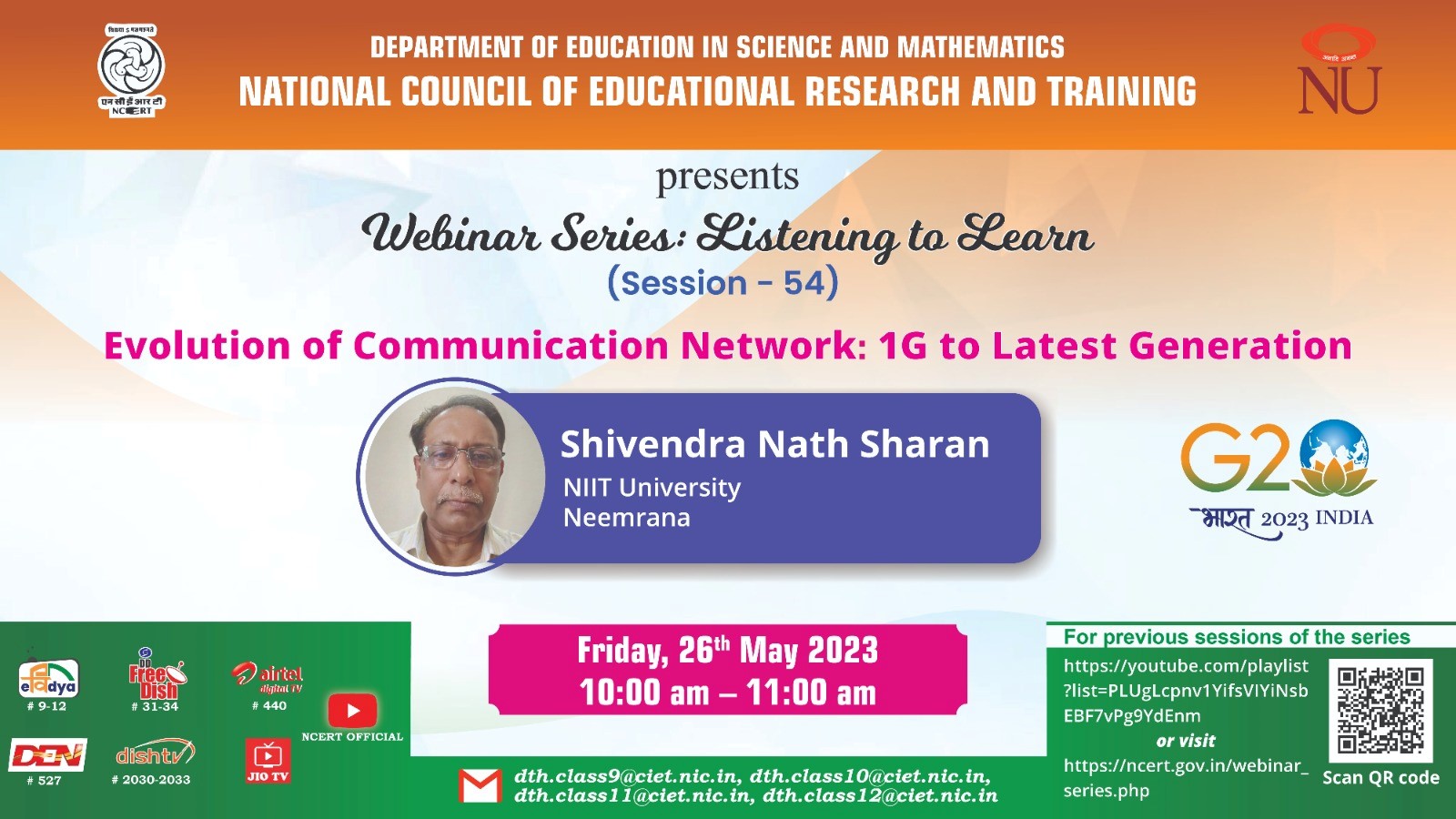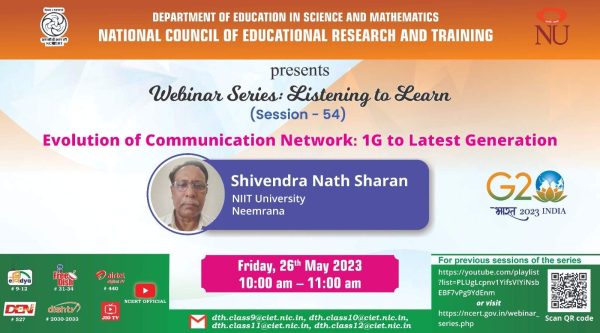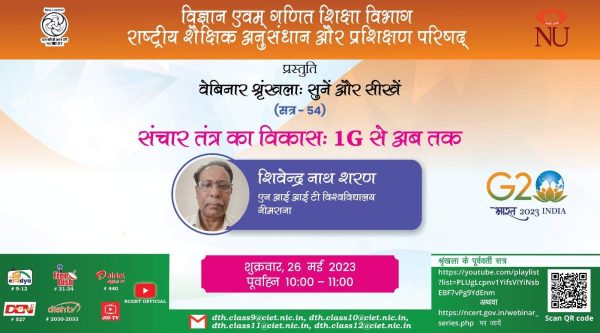
Prof Sharan delivers NCERT webinar on ‘Evolution of Communication Network’
Date : Friday, May 26, 2023
Time: 10:00 am – 11:00 am
Venue: External Event Online Check out at
https://www.youtube.com/playlist?list=PLUgLcpnv1YifsVIYiNsbEBF7vPg9YdEnm
To view all NCERT webinars, visit
https://ncert.gov.in/webinar_series.php
Prof S N Sharan, Area Director of Electronics and Communications Engineering (ECE) delivers at webinar on ‘Evolution of Communication Network: 1G to Latest Generation’. Communication Networks have evolved from pure analog systems to digital and now being integrated with Internet of Things (IoT).



About the topic
The field of electronics and communication has undergone a paradigm shift over the last forty years or so. Till 1980s, electronic gadgets used to be based on processing information signals in analog form. Communication devices such as antennas, carrier signal generators like klystron and magnetron, signal transmission systems like fiber optic cables, satellite communication-based devices for up-linking and down-linking, radio access networks, etc. all use analog signals.
Towards the end of the 1990s, communication devices started undergoing a transition from analog to digital. The integration of the Internet of Things (IoT) and the use of sensor network systems have made it possible to transform voice communication into multimedia communication, limited Services to large Services, etc. Nowadays the degree of impact of digitization, fiber optic for broadband communication, optimum bandwidth utilizations techniques, signal compression algorithms, white-space utilization techniques, security of information, etc. can be clearly seen in the advancement of communication network protocols. These protocols are often set by bodies like International Telecommunication Union (ITU). Over the period of nearly thirty years, the communication network protocols moved from 1G to currently 5G+ and above.
Depending upon the upgradation in electronics sub-systems/devices, IOT-enabled networking and sensing devices, ad-hoc networks, etc., it envisages further advancements. It is projected today that IoT and sensors within the next three-four years would enable tremendous growth in communication network technologies.
This talk attempts to address issues and associated technologies related to the transition of communication networks from 1G to the latest generation in a simplified manner. The talk also describes several new types of job openings, in addition to conventional job profiles.
About the Speaker
Dr. S. N. Sharan completed his Ph.D. at the Indian Institute of Technology in 1988. He is presently associated with NIIT University, Neemrana as a Professor and Area Director of the Electronics and Communication Engineering Area. He has been associated with several educational institutions including the Birla Institute of Technology and Science, Pilani; Modi Institute of Technology and Science, Laxmangarh; Galgotia College of Engineering and Technology, Greater Noida; Manipal University, Jaipur, etc. in various capacities.
A great teacher Dr. Sharan has taught various courses in electronics engineering to undergraduate and postgraduate students. He has also coordinated the SIEMENS Centre of Excellence and INTEL Microcontroller (ARM Processer) Lab at the Manipal University, Jaipur.
Prof. Sharan is a member of several professional bodies and has twenty-eight research publications in peer-reviewed journals to his credit. He is the author of a book titled Signal and Systems published by McGraw Hill Intl., and also of Expert Systems published by CBS Publishers. He has been the Principal Investigator of four research projects funded by the AICTE, MNES, and UGC. He has also so far guided ten doctoral theses.


